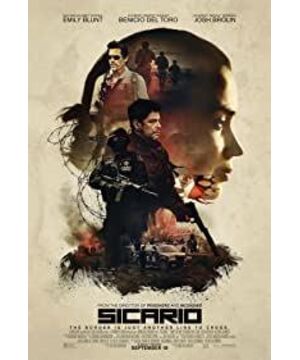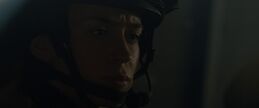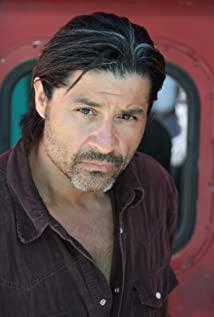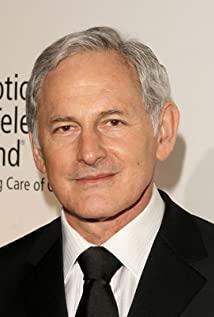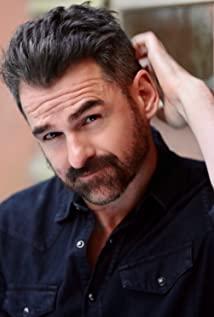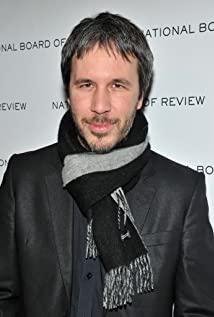"Border Killer" is a police action film released in 2015, directed by Canadian director Dennis Villeneuve, screenwriter Taylor Sheridan, and starring and starring photographer Roger Diggins Emily Blunt, Benicio del Toro, Josh Brolin, the film was nominated for Best Photography at the 88th Academy Awards, and the Palme d’Or, the main competition unit of the 68th Cannes Film Festival Award nominations.
2.
Director Dennis Villeneuve is one of the most popular author-based commercial film directors in Hollywood in recent years. His works "Scorched Earth", "Rivals", "Prisoner", "Border Killer", "Arrival" The new work "Blade Runner 2049" in 2017 has attracted much attention because of its deep humanistic temperament and its consistent slow pace in the genre of sci-fi commercial movies. The screenwriter Taylor Sheridan successively created "Go Through Water and Fire" and "Hunting the Valley of the Wind" after "Border Killer", forming his "American Border Trilogy" focusing on barbaric regions outside of modern American society. Photographer Roger Diggins is known as the uncrowned king of the Oscar for Best Photography. He is good at delicate and subtle tonal processing, portraying people and setting off the atmosphere through silhouettes, aerial photography and other methods.
3. Fragment analysis
1. From the 24th to 30th minutes of the film, the anti-narcotics convoy penetrated into Juarez City to analyze the aerial footage of Juarez, a
city on the border of the United States and Mexico, where drugs from South America entered the United States. There are several gangs engaged in drug trade in the city. The ongoing armed conflict has left this sinful city in a legal vacuum. The purpose of the protagonist and his group is to go deep into the city and escort an important informant to the United States. This is the first time that the heroine Kate has faced the frontline of anti-narcotics. The composition of the anti-narcotics team during the escort task is irregular. The superior Matt, Alessandro and others have used inhumane treatment of drug dealers. These have impacted the heroine’s Legal awareness and moral bottom line.
In response to the above-mentioned plot needs, photographer Roger Diggins adopted a wide-open lens design for this paragraph. From the perspective, the most important part is the Kate perspective shot in the car. This is the entire paragraph. The main axis of the film, the photographer always pays attention to Kate's expressions and movements in the medium and close shots, allowing the audience and the protagonist to perceive the powerful impact of the sinister and ugly border reality on the inner order. In addition, the photographer also used the outside camera to shake and follow the life of the citizens of Juarez, and always let the chain-like anti-drug fleet appear in the street scene of Juarez, creating a calm and perilous surface. Strong tension. In addition to these two more conventional shooting methods, photographer Roger Dickins also used a large number of magnificent aerial shots to create atmosphere and promote narrative.
The aerial footage at the beginning of the paragraph starts from a small town in the United States and slowly advances in the deep and deep soundtrack. With the powerful expressive power of the aerial footage, the barren land on the US-Mexico border hits the hearts of the people. The barren land of modern civilization on the reinforced concrete foundation is completely different, and the sparse thorns and green plants on the desert are full of pain. The editing of continuous aerial photography always maintains a low and powerful sense of rhythm and a sense of form in geometric composition. From sandy lands, to cities in rich areas, across borders, and to poor mountainous areas, the slum residential areas are crushed by dust, which is even more breathtaking.
Of particular note is an aerial shot at the 26th minute of the film. The camera pulls away from the front left of the convoy speeding on the highway. The convoy becomes smaller and smaller at the bottom right of the screen, and the huge urban area is heavily covered. Pressed on the upper left of the screen, this large-scale contrast creates a cold and depressing viewing experience for the audience, and is consistent with the rhythm and suspense of the entire paragraph.
2. From the 82nd to the 89th minute of the film, the anti-narcotics team set off in the dark to assault the night scene of the drug delivery tunnel.
This is the highlight of the second-third of the film. It tells the anti-narcotics team to obtain intelligence and conduct investigations on the tunnel where the drug gang is located. Assault to close the net. Villeneuve and Roger Diggins adopted a very stylized audio-visual design when designing this paragraph, that is, using an extremely realistic way to deal with night scenes, and without using any dramatic artificial lighting effects under low illumination conditions.
This paragraph begins with a thunderstorm in the wilderness at dusk, and sets the tone of the entire paragraph. When the anti-narcotics team was arranging equipment near the tunnel, the "magic hour" at dusk was about to end, and then two teams of special forces slowly stepped out of the painting. The background was the last faint sunset before the darkness fell, and all the characters were in silhouette. When shooting, these dark shadows gradually disappeared into the deep darkness at the bottom of the screen. Through this extremely unique picture processing, the photographer accurately conveyed the perception of "demon sneaking" to the audience.
After entering the night scene, Roger Diggins did not use the conventional night lighting method to shoot, but kept the real dark state of the scene, using the infrared imaging camera and night vision camera that simulated the subjective perspective of the person to shoot, even in the dark The scene is directly shot. Roger Dickins said in the interview, "This scene is meaningless to do the traditional Hollywood moonlight. Since it is completely dark, if the audience can see the characters, how can the characters in the story be invisible? What about each other?" In addition to the strong sense of presence brought about by the pursuit of reality, this extreme photographic processing has further completed the stylized expression of the film.
As the plot progressed, the protagonist and the group took advantage of the night to touch the tunnel entrance, and the captain gave the command to release the weapon ban. Since entering the hole, the danger is extremely dangerous, and the team members can judge and deal with it by themselves. In the shot, the hole shows the blue sky. Alessandro is in the lead. He holds a submachine gun in his right hand and pulls a saber from his leg with his left hand. But the person never stops moving forward. When the body moves from the center of the lens to On the left side, only the silhouette of a short knife can be seen in the center of the picture in the backlight. Immediately after the camera cut to the subjective infrared imaging perspective of the heroine, the camera slowly followed the footprints left by Alejandro on the ground, while hearing the sound of fighting from the front. The camera continued to move forward. The audience followed the heroine's vision and saw that two guards in the tunnel had their throats cut and fell to the ground to death. This processing method continues the solemn and solemn atmosphere created before, avoids the same action scenes, but uses a very realistic and substituting way to make the audience full of imagination of the death battle taking place in the dark tunnel. It gave the audience an unspeakable impact.
3. Look at the expression of the theme of "silence" from the 108th minute to the 115th minute end of the film
The story of "Border Killer" itself is not complicated. It is nothing more than the sordid reality of unconventional transnational drug operations, extrajudicial sanctions, black gold transactions, mutual exploitation, etc., driven by a sense of justice driven by female FBI agents who have not been involved in the world. , Impacted and destroyed her idealism and traditional view of justice. Kate’s character design is very similar to the female agent Starling played by Judy Foster in the classic film "The Silent Lambs", but the character development trend is completely opposite.
In "The Silent Lamb," Starling is also a fragile and tough rookie agent, pushed by her boss to the ogre Hannibal to investigate the serial murderer Buffalo Bill. Facing the dangerous environment and impossible tasks, Starling got help from Hannibal. While arresting Buffalo Bill, she also opened her childhood heart knot, won FBI internal awards, and completed positive growth. Change, and finally walked out of silence. The female agent Kate in "Border Killer" is the opposite. She was pushed from the kidnapping investigation to the anti-drug front by her boss. Chess pieces, the meaning of their existence is only to obtain a legal identity for the dirty anti-drug task. In this process, her previous principles of conduct and ethics were completely broken and no longer applicable. Her idealism was hit for the first time. She also tried to deny her rejection and tried to use the usual justice and legal procedures to apprehend the suspect. It was not only useless but also dangerous. In the end, Kate had to sign the legal document provided by Alessandro, ending her fruitless resistance, and finally lost, struggling, and broken in silence.
There was a story about two sheep in the Hong Kong movie "Auntie". Two sheep fell into the wolf pack separately. In order to survive the bloody wolf pack, the first sheep changed itself and made itself more fierce than the wolf; while the second sheep was unwilling to change its kindness The nature of integrity is also for survival. It changes the wolves. But in reality, most people have neither the ability to change others nor the courage to change themselves. Silence is their only choice.
View more about Sicario reviews


